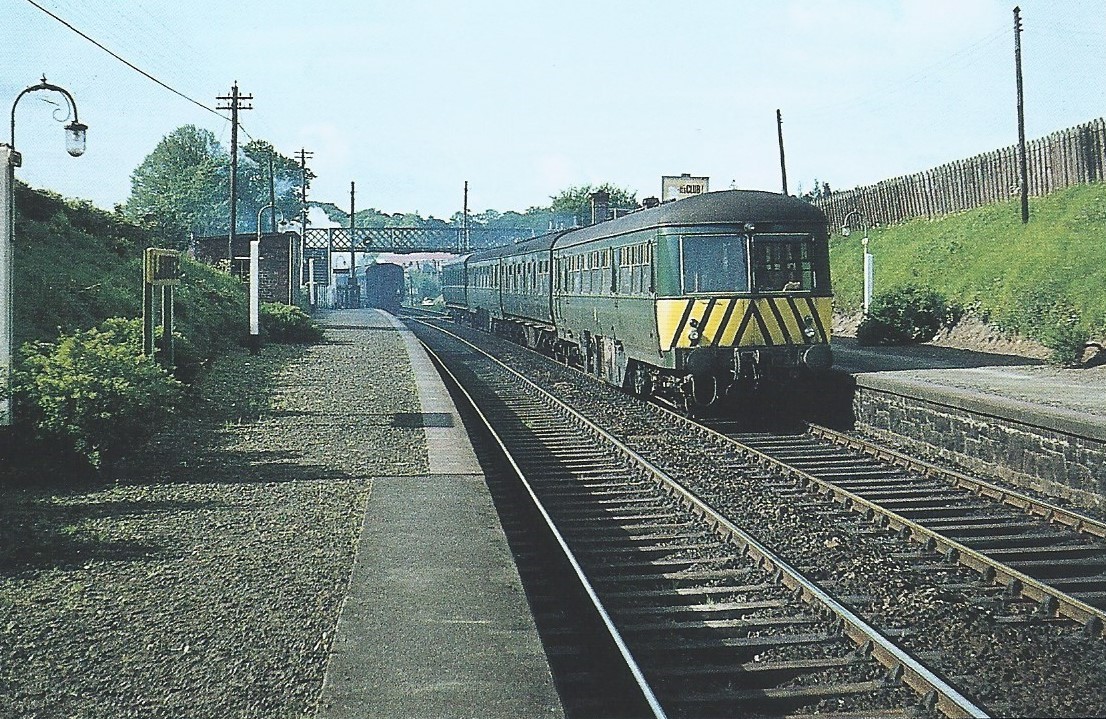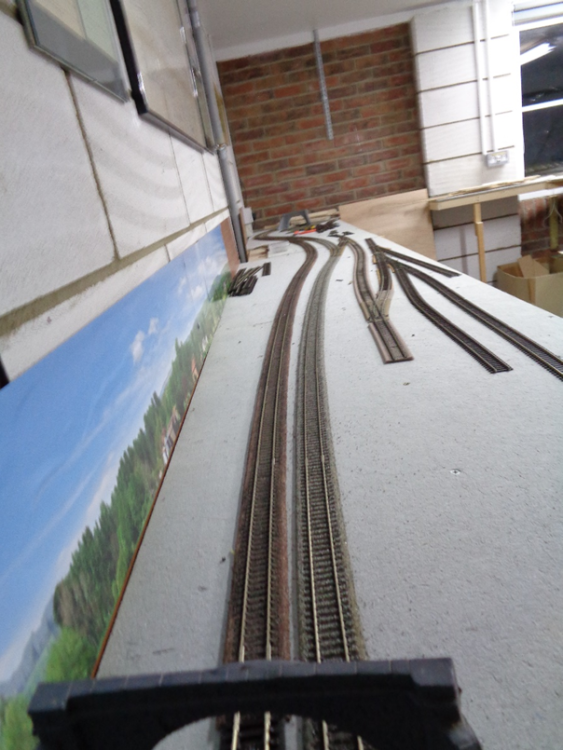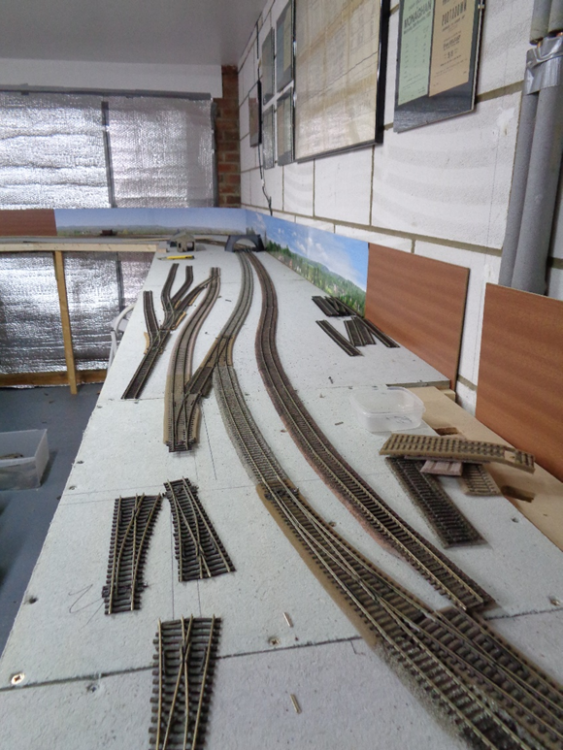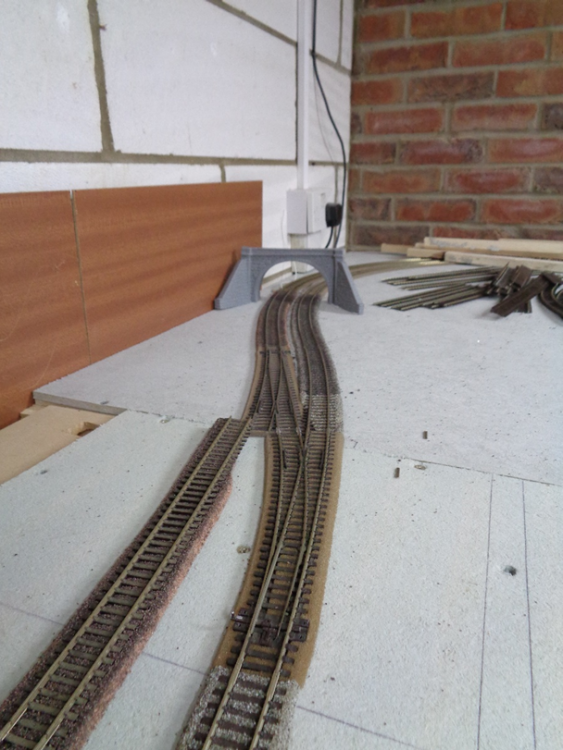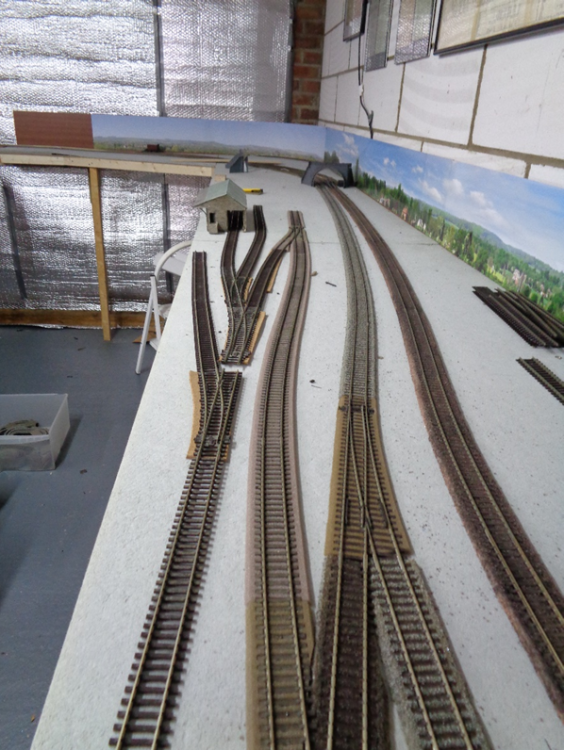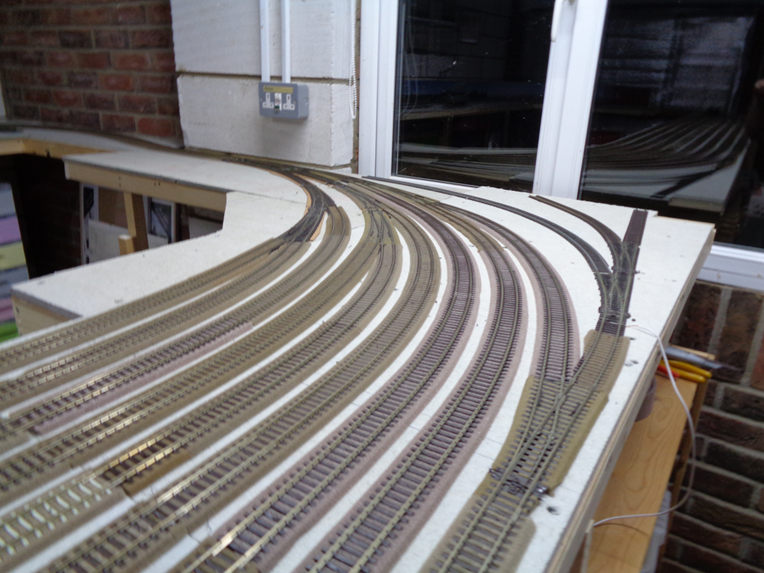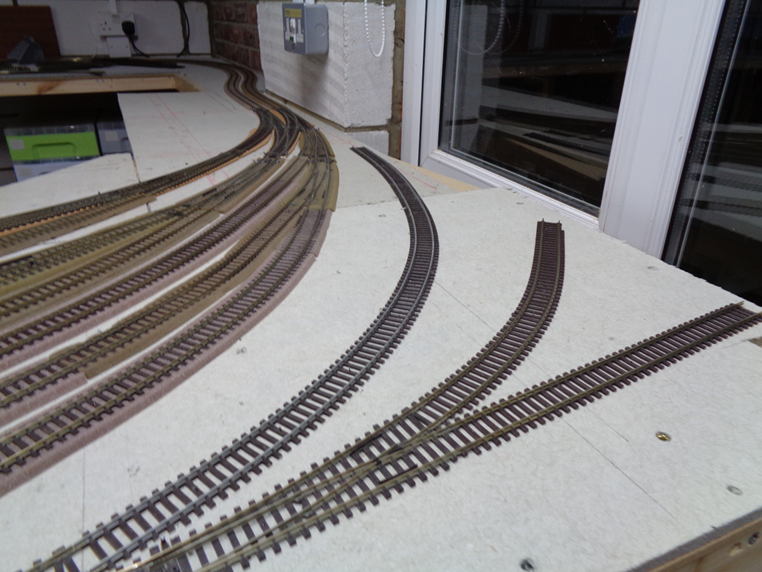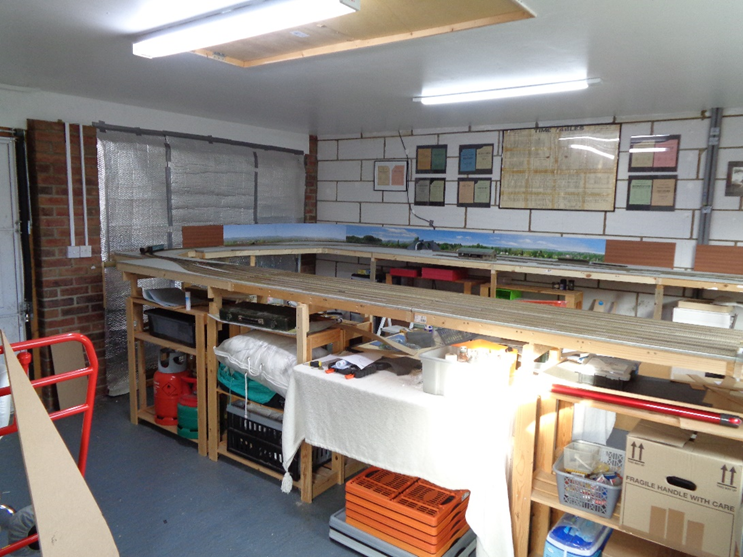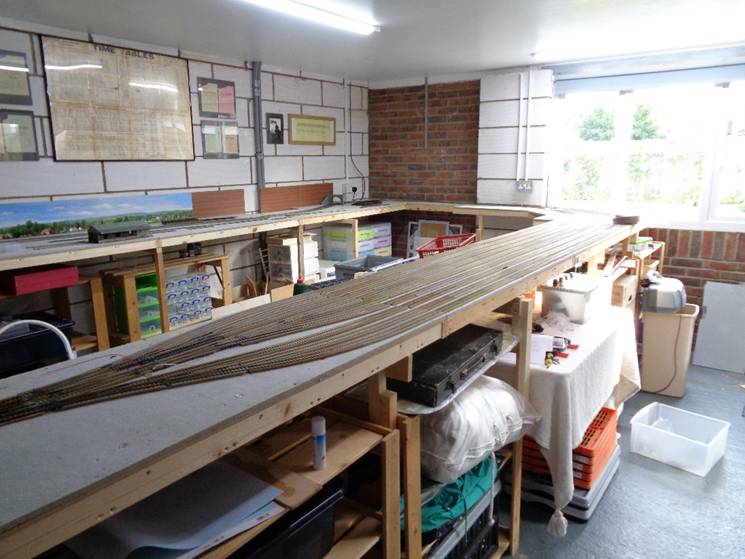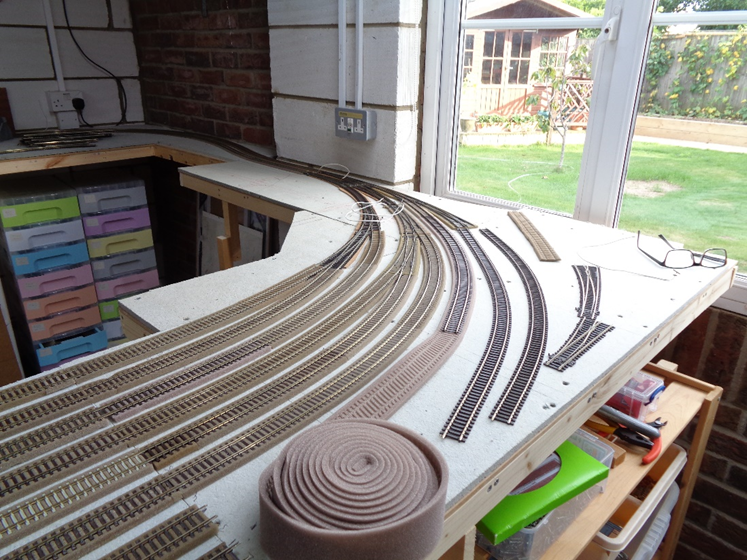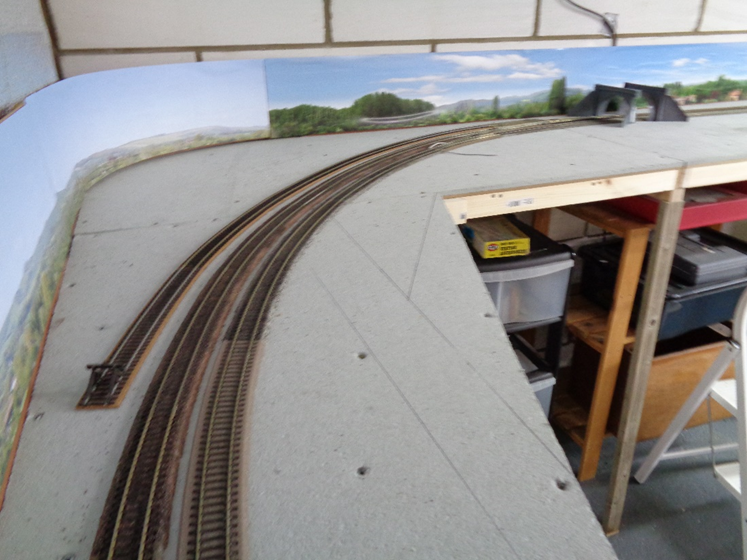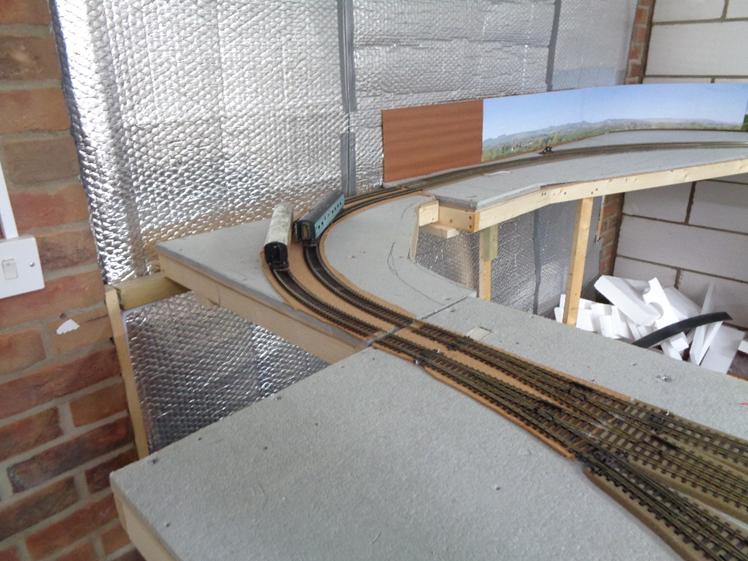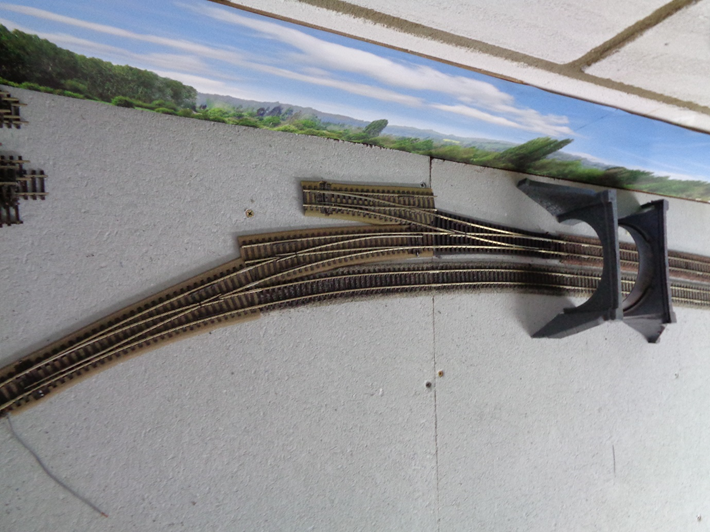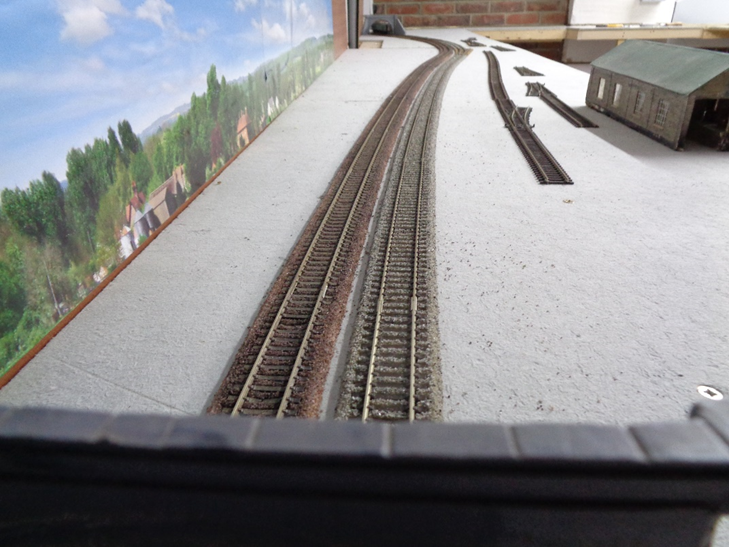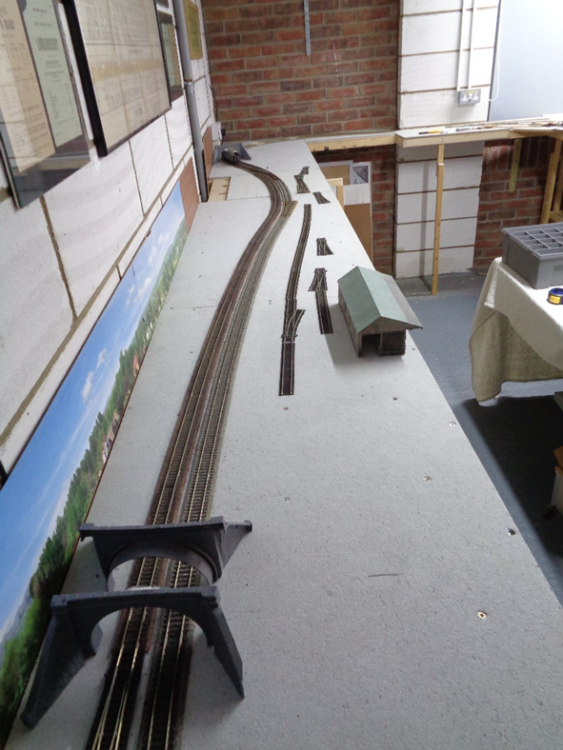-
Posts
433 -
Joined
-
Last visited
-
Days Won
3
Content Type
Profiles
Forums
Events
Gallery
Blogs
Store
Community Map
Everything posted by Lambeg man
-
Hi Airfixfan, try Alan O'Rourke, I think he published some way back in New Irish Lines. LM
-
.thumb.jpg.619b7e43fcb01ddf7c110aacc1ea31d3.jpg)
Ernies Massive Irish 1930's to 2005 Photo Archive
Lambeg man replied to Glenderg's topic in Photos & Videos of the Prototype
This was a UTA organised 'Steam Special' to Dublin to mark the withdrawal of (official) steam working. Subsequent steam specials which ran between Belfast and Dublin were organised by the RPSI. -
Would love to see that.
-
Hi Jon, In 1950 (by the terms of some international agreement), 2nd class was abolished, leaving 1st and 3rd. The GNR(B) at least did not "rebrand" 3rd class to 2nd until 1956 and I suspect CIE & the UTA may acted in a similar manner at the same time. LM
-
.thumb.jpg.619b7e43fcb01ddf7c110aacc1ea31d3.jpg)
Brookhall Mill - A GNR(I) Micro Layout
Lambeg man replied to Patrick Davey's topic in Irish Model Layouts
Very good! -
Originally posted April 2020....... I have very recently purchased an old Triang/Hornby DMU cheap as chips, purely for the motor bogie. This however had the old 'Super 4' chunky wheels. To get replacement wheels I tried contacting a couple of parties that were recommended to me, but none even replied. Then I saw this guy advertising in the 'Railway Modeller'. Dave Good, trading as "Scalespeed", 32 Goldfinch Lane, Lee on Solent, Hants PO13 8LN. His website is www.scalespeed.co.uk. I sent him all four of my T/H DMU power bogies. For about £25 (including P&P) each, all now have Code 100 wheels, have been re-magnatized, re-brushed, cleaned, etc. and he also fitted extra wires to allow electrical pickup from another bogie. Two of them power my two BUT sets, the other two are headed for an MPD and a Class 70 projects which are under way. He does a big range of motor refurbishment. Turnaround time was about five days. I can not recommend Dave's services highly enough.
-
Hugh Davies (A.K.A. "Photo's from the Fifties"). He has a website.
- 1 reply
-
- 1
-

-
Met her once in 1982 for a very brief conversation. Absolutely charming lady. How she she could make small talk with so many people yet appear genuinely interested in everyone's story. RIP
-
Old Dave Allen joke - Ian Paisley (years ago) preaching exactly as above. Woman in the congregation asks "Doctor Paisley, what about those of us who have no teeth?" Response "Teeth will be supplied!" Apologies for the interruption. Interesting thread Patrick.
-
I have worked out that in reality it was a 'Catch Point'. However I have not the time to hack a 'Catch Point' from a Peco point, so I've placed a Peco point and a very short length of track ending in a Peco wooden packed buffer stop. History has taught me that when you view your work and something at the back of your mind says "That's not quite right", there is little point in persevering with it. If it was "Not quite right" in the beginning, by the time wiring and scenery have been fitted, it will look total rank. Instead of wiring up the 'Main' lines for some running, I thought I would at least lay some points and track down in the bay platform and station goods yard. As previously stated MY 'Scarva' will have a Goods Shed. However I wanted to retain the Loading Bank feature that rested between the bay platform head shunt and the spur off the run around loop. I found the exercise would prove the Goods Yard to appear cramped (especially once MY goods shed is added to the original track plan). So tonight's effort was to unpin the main line and ease the curve further outwards. The realigned DOWN main line viewed from the over-bridge and the UP main in the original alignment. View from the opposite direction showing the amount of deviation in the new alignment. The 'KINK' issue with the DOWN main is caused by the use of the 'long' radius Left Hand point for the UP main to BRANCH turnout. However, I am in a mind to replace this with a 'medium' radius Right Hand point tomorrow and suffer a brief section of straight track in the UP and DOWN main lines. Easing the main lines towards the back of the baseboards will reduce the the required sharp curvature after the north crossover. An idea of how the goods yard layout was being squeezed at the far end. Once the bay platform line is moved over to align closer with the UP main, it will hopefully free up a bit of space.
-
.thumb.jpg.619b7e43fcb01ddf7c110aacc1ea31d3.jpg)
Ernies Massive Irish 1930's to 2005 Photo Archive
Lambeg man replied to Glenderg's topic in Photos & Videos of the Prototype
I don't think this the 'Tourist' train. Other photo's show the 'Tourist' was only 5 or 6 carriages (including the Kitchen Car which was always in the middle of the set), while in this photo there are 8 carriages and the Kitchen Car is at the front. Behind the Kitchen Car there are 3 x K 15 open Seconds followed by a much older wooden paneled coach, then another 3 or maybe 4 carriages. As to why this Special was running on that date, I have no idea. I don't think it could be Rugby related at that time of year. Perhaps some Roman Catholic event in Dublin? -
.thumb.jpg.619b7e43fcb01ddf7c110aacc1ea31d3.jpg)
Ernies Massive Irish 1930's to 2005 Photo Archive
Lambeg man replied to Glenderg's topic in Photos & Videos of the Prototype
Note the UTA (ex-GNR) Kitchen Car immediately behind the engine. -
.thumb.jpg.619b7e43fcb01ddf7c110aacc1ea31d3.jpg)
Where to get provincial wagon kits?
Lambeg man replied to Majesitc_Trains's question in Questions & Answers
It was visited by Rob Bell during his recent Irish railway documentary. He was invited inside, very impressive house now! -
Tonight's efforts... The other end of the Hidden Sidings finished with three 'Kick Back' sidings off the outer DOWN loop. The 'Kick Back' sidings are an attempt to use an otherwise vacant corner section. The two short sidings to the right are each intended to hold a locomotive, while the third longer siding will take wagons removed from a goods train. Operational experience from the "Lisburn North" project proved the that the most satisfactory operation of trains to represent the UTA (ex-GNR) main line goods was - 1: A DE hauled CIE fitted goods (with cement bubbles and fitted vans). 2. A Steam hauled un-fitted UTA goods (with a rich mix of vans and BR containers), plus 'red' liveried open wagons. Both trains being lengthy they will occupy the outer loops in the Hidden Sidings.
-
.thumb.jpg.619b7e43fcb01ddf7c110aacc1ea31d3.jpg)
Where to get provincial wagon kits?
Lambeg man replied to Majesitc_Trains's question in Questions & Answers
The 'Enniskillen Shipper' appears to have been a regular working to take traffic offered to the GNR by companies to the west. The GNR weekly circulars are full of separate 'Fair' workings that generated other cattle trains bound for Maysfields. Your photo may be one these. Another point is the date. The train is travelling towards Belfast on what would have the UP line on this section of the GNR. Both the UP and DOWN lines appear to be together as far as that bridge in the distance. Correct me if I am wrong, but was not the Richill-Armagh section singled in circa 1933? I would have expected to see apoint on the other side of the level crossing. Surely all cattle specials irrespective of where they came from, had to be into Maysfields between 16.00 and 17.00 to allow time for the cattle to be unloaded and 'drovered' to Donegall Quay? Thus any specials would have run in daylight hours, no matter what time of year? Norman Johnston identifies the Railcar in the afore mentioned photograph as being the 16.25 ex-Portadown. As to whether the UTA continued to service Fairs on the former GNR lines (where the station was still open) after 1958, perhaps someone with a 1959/1960 copy of the UTA (GN area) Weekly Circular could advise if specials were still being notified by then? -
Les, that would depend on you allowing King James to win - just for once! (Reference to a GNR driver pulling into Scarva on a 13th special and asking a waiting member of the brethren "Who won?") Regarding paucity of photographs, does anyone know how the reverse turnout on the entrance to the 'Long Siding' ended? Buffer stop? Sand drag? Answers on a postcard please.
-
Photographic update on progress. Overall view of the layout looking towards the main garage doors. The right hand door has been locked and thermal insulation fitted to cover the door area. The left hand door has been left as it is to allow access. View taken from the side entrance door. This layout is narrower that the last "Lisburn North" was, yet with far more scenic 'run'. Overall view in other direction. Opposite end of the Hidden Sidings showing near completed trackwork. The two points on the right are there as a series of 'Kick Back' sidings from the outer DOWN loop for loco storage are being considered. View south from the road bridge with the 'Long Siding' in place. The 'Long Siding' (which here could hold 6 bogie carriages at a push) has been laid on cork sheet as I envisage it will covered in a lot of grass/weeds due to being out of use. I want to include this feature as my memory of early 1960's rail travel was that even between Belfast and Lisburn, the view from a carriage window was frequently punctuated by scenes of overgrown abandoned sidings, e.g. Balmoral, Finaghy & Hilden. The track used here is real steel which has rusted in a most realistic manner. The lifting section shown in place. The inner curve is provided by 2 Peco Setrack 21" radius curves, the outer one then being laid with the gauging coaches checking clearance. Cork sheet underlay was used to reduce the impact of the board when lifted against the thermal insulation sheeting. Clearances are tight but to expand the size of this lifting section board would impact on the length of the Hidden Sidings. Once the remaining Hidden Sidings are connected at the other end, the Main Line oval will be complete and ready to be wired. This would then allow limited train running, while the station yard is laid and the branch line set up.
-
.thumb.jpg.619b7e43fcb01ddf7c110aacc1ea31d3.jpg)
Where to get provincial wagon kits?
Lambeg man replied to Majesitc_Trains's question in Questions & Answers
While the GNR(B) ran the 'Enniskillen Shipper' on a daily basis up to the 1957 line closures, there is little photographic evidence of similar LENGTHY cattle specials in the succeeding years. By 1958 refrigeration was beginning to kick in, reducing the need for the mass movement of live beasts, Post 1957 the goodly cattle dealers operating in the West of Ireland would have consigned their cattle to Dublin rather than Belfast (if they used rail at all). I think I may be correct to say that no photographs of post 1958 cross-border goods trains show any cattle wagons in their consist. Neither do any 1960's photographers appear to have ever captured any lengthy cattle specials operating over UTA lines. I would be very pleased to be corrected on either statement! However there is a photograph taken at the south end of Portadown goods yard (dated 22/10/1959) on the last page of Norman Johnston's second ULSTER IN THE 1950's book. It shows a late afternoon Railcar heading for Newry and passing what Norman described as a "Down cattle train heading for Belfast". Where it may have originated is not given. It could only have come from a fair either somewhere up the Derry Road or the Newry direction. For what it is worth I have seven heavily modified ex-BR cattle wagons masquerading as GNR(I) types. Would love an excuse to use them on my 1960's 'Scarva' layout! -
The Brunswick' green from Humbrol is too light for UTA 'green'. I am not aware of an accurate off the shelf product. I have always added a small dollop of MATT black to the Humbrol GLOSS 'Brunswick' green and achieved a reasonable representation of the darker UTA tone.
-
As your plan shows only single disc's can it be assumed they only showed 'green' when the the point was switched to other than the normal running practice? In both 'up' and 'down' directions through the two trailing crossovers a reverse move on the main running line would have been an negative move, hence a single green to indicate a positive? If I was starting from scratch, I would have assumed there was a junction signal at the north end of the up platform to control movements from the UP main to the branch. Your input to date has been much appreciated and very informative. Many thanks.
-
Update on further progress. Point work at the southern end of the station. A study of available photo's show that the curve at the south end was quite sharp. Other published photo's show the the curve through the station was quite gentle. View from the over-bridge. Overall view of the station area looking north. Overall view of the station area looking south. Only the main running lines are currently 'pinned'. ' The' 'gauging' coaches. Two scale '70' Triang/Hornby carriages that are run around sharper curves to check for potential clashes. So far so good!
-
You are joking! Please, you are joking...
-
Yes, mistake amended. Theoretically such a movement whereby the Railcar/Railbus then reversed from the DOWN to the UP main line would have constituted a mere "Shunt". Surely the ground discs would have been sufficient indication to a driver that he was clear to carry out any such "Shunt" either way between the Main Line and the Branch? As outer homes were provided, I agree with you that another train could have been accepted into the BLOCK while such a "Shunt" was taking place. Hence no need for separate Main to Branch & Branch to Main signals?
-
Yet between 1933 up to 1955 the Branch Railcar/Railbus (plus the steam substitutions) regularly ran from Banbridge (through Scarva) to either Goraghwood or Newry. Question - which crossover did they use to reverse when heading north? Arriving at the DOWN platform and conducting any Scarva station business there, reversal might have been through the southern trailing crossover, leading then to a straight run through the UP platform and onto the Branch line and away for Banbridge. Yeah?
.png.c363cdf5c3fb7955cd92a55eb6dbbae0.png)
